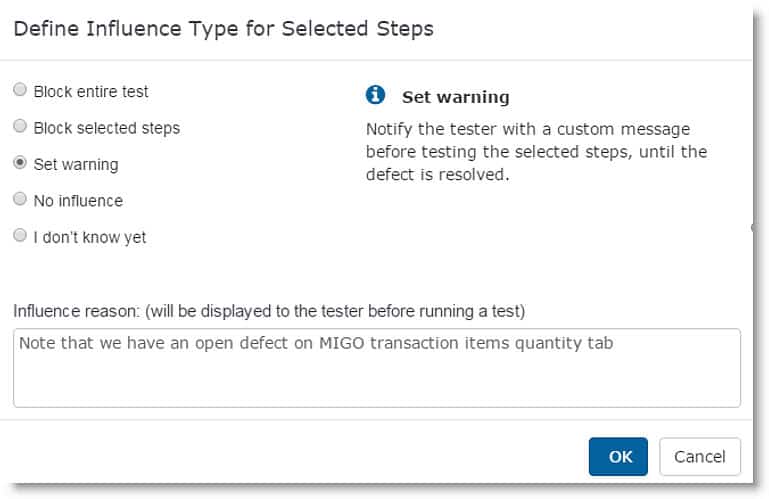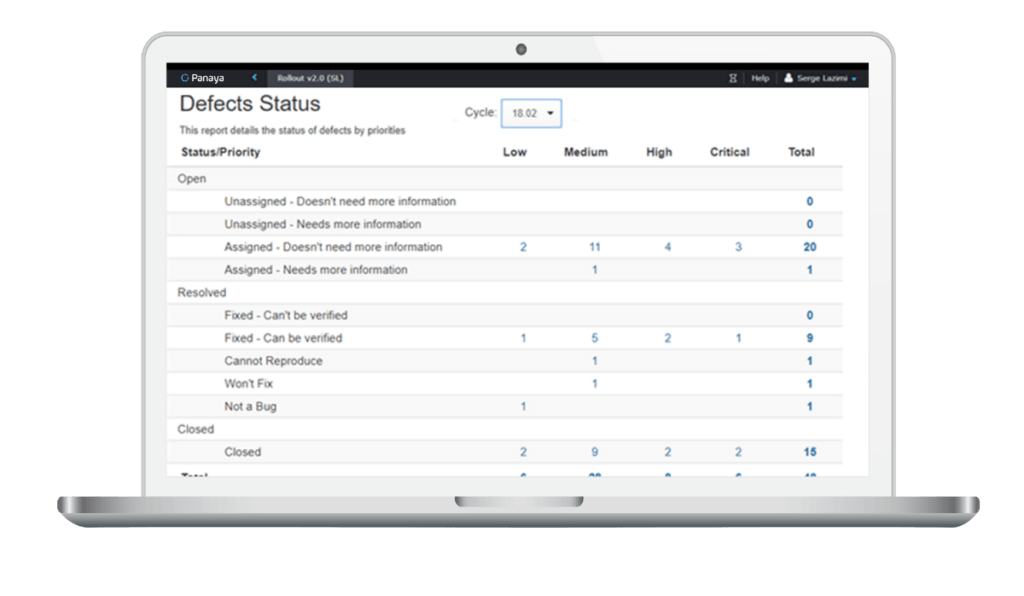Table of Content
Once upon a time, when I was a testing manager and QA group leader, we joked with testers that their salary is based on the number of defects they find. In those days, quantity was more important than quality in the eyes of many executives.
Well thankfully, that era is over. In today’s agile, high-paced work environment, all we want is focus. Yes, focus. Focus on the right things, solve the real problems, and move on.
Finding defects is, of course, still one of the most important goals of software and system testing. And when a tester identifies a defect, the goal is to fix it as soon as possible at the development level. In some cases, it reveals an opportunity for improvements that make the product even more stable and prevents similar errors down the line.
What is Defect Management?
In order to be successful and efficient, the process of identifying and fixing bugs must be ongoing, coordinated and systematic.
That’s defect management.
It is key to quality assurance, as it directly improves product development. You can track defects and confirm their resolution, and, with effective root cause analysis, prevent recurring issues in the product’s lifecycle. Defect management can also play an important role in regulatory compliance, providing a systematic check of adherence to mandatory standards and a detailed record of correctives undertaken.
What is the Defect Management Process?
Managing a defect means monitoring it from the moment it is discovered, ensuring it is recorded, moving it along to the person (or automation) who has to decide on next steps, taking the appropriate action to get the bug fixed, checking that it was fixed and archiving it. This process can be broken down more sharply into the following stages:
- Identification: The defect is detected by a testing team or an end user (preferably, in fact, an end user who is also a tester and recorded in a defect management system. The documentation should include all the data and information necessary to understand how and when the bug cropped up.
- Categorization: The defect is reviewed by a pre-designated individual or an automation for categorization according to type, severity and prioritization. This generally includes assignment to a specific developer or team for the next step: resolution.
- Resolution: Developers take over and address the defect. Once it is fixed, the developer follows the internal processes for integrating the new code. This includes, of course, documenting the resolution in the defect management system.
- Verification: Of course, the developers verify that their repairs accomplished what they intended them to. But more importantly, the business process testers need to once again test the software to confirm that it works properly in a real-life scenario.
- Closure: Once the defect is resolved, it is marked as closed. This is a more critical stage than you think, as it can help avoid unnecessary duplication (more about that later).
- Reporting: At regular intervals and at the end of a project, reports are created providing information about all the defects that were identified, where they stand, and what the delivery timeline is. Such reports can also reveal recurring issues, coding challenges, the general quality level of the code, and the number of unsolved defects at any one time.
Defect Management Goals
After running through the defect management process, it is important to remind ourselves of the overall goal: creating high-quality products. That means defect management should be seen as part of a holistic approach enabling more proactive quality assurance.
Done right, defect management plays a role in streamlining QA, development process optimization, and visibility within the organization. It can also reduce monetary and reputational costs to your organization, as you’ll avoid expensive rework, recalls and regulatory risk.
Defect Management with Panaya Test Dynamix
Panaya Test Dynamix is our solution for standardizing application testing, including sophisticated, centralized defect management. Automated defect monitoring and reporting, as well as proactive notifications, ensure rapid resolution and improve your overall quality assurance processes.
Panaya Test Dynamix is the only AI-powered smart test management platform for ERP and business applications on the market. It improves upon traditional testing and defect management with features like risk-based testing, anticipation of defects, fully automated documentation, configurable automated workflows, and more.For instance, when reporting a defect, the error screenshot and the steps to reproduce the defect are identified and automatically added. This saves time on the back-and-forth communication between tester and developer. Moreover, testers are notified when their defect is resolved and ready to be re-tested. Which is, again, a time-saving feature. Learn about the Software Testing Life Cycle.
But What About Defect Inflation?
Now, think about application testing as an end-to-end business process-oriented environment. In practice, an application is used simultaneously by different users and that can be easily mirrored in the testing process.
It’s very likely that a tester will find a defect in a business component and another tester will come across the same defect in a separate test. In this case, the same defect will be reported again and again, causing a needless duplication of effort, wasting both testers’ and developers’ time. The testers will report the defect, add screenshots, descriptions, steps to reproduce it, and the like, while the developers will spend time trying to understand the problem, contact the tester, and then just have to mark the defect as a duplicate.
In fact, industry research indicates that some 30% of identified defects are actually duplicates.
System-wide defect management
We at Panaya are well aware of that painful waste of resources and how it prolongs time-to-market. That’s why we’ve introduced a new functionality to bring down the high defect inflation rate.
Panaya Test Dynamix identifies each defect’s potential to be system-wide, meaning that it may affect other tests, and sends out the relevant alert to the testing manager. The platform even suggests several courses of action.
The testing manager can, for instance, define an automatic notification for all testers assigned to test the component with a system-wide defect.

Define influence type on other tests
As you can see, other options are available as well.
With the easy-to-use, rich Panaya’s Testing dashboards, project managers have full visibility into the system-wide defects and their influence on other tests. This helps them to immediately identify potential and past testing bottlenecks, which provides the information they need to preemptively improve the QA process.

System-Wide defects dashboard
In short, Panaya Test Dynamix is designed to make defect management smarter, simpler, more effective and more friendly.
Oh and one more thing, no other testing platform has similar capabilities.

